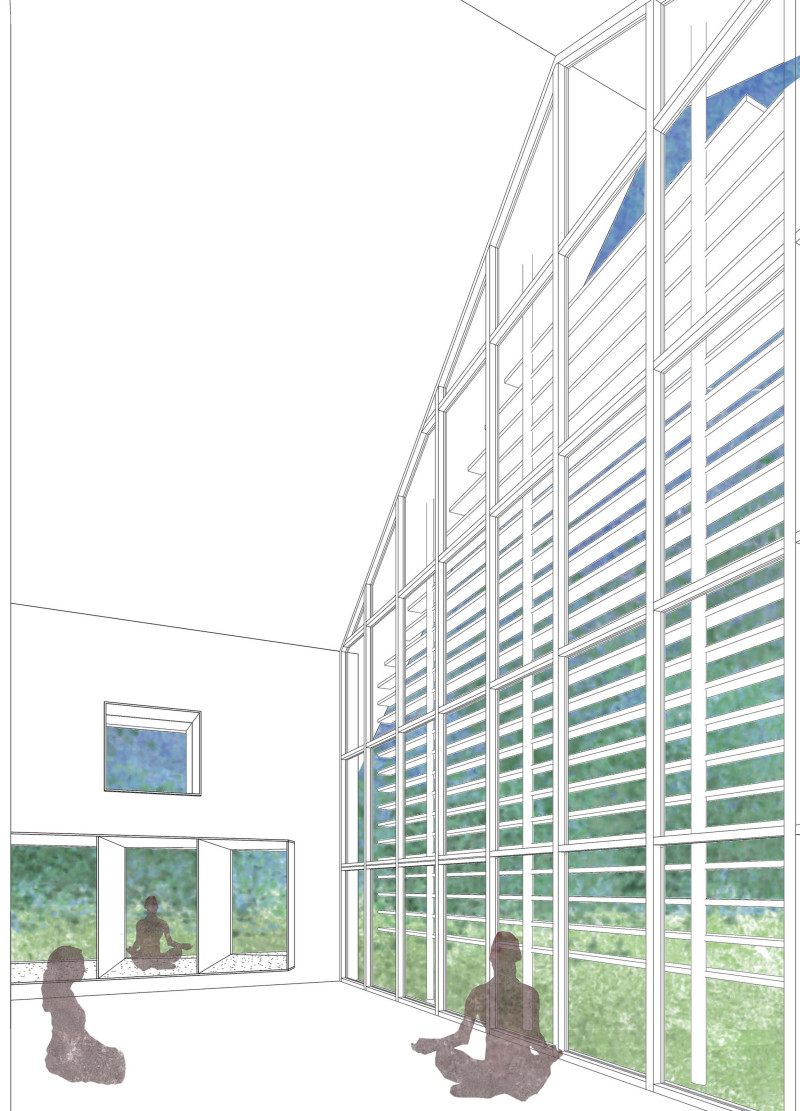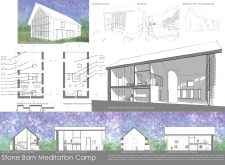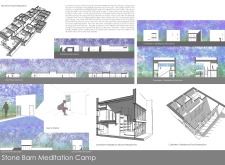5 key facts about this project
The design emphasizes an open floor plan that encourages movement and social engagement among residents and visitors. The layout is spacious yet defined, allowing for distinct areas that cater to various activities, from communal gatherings to private reflection. The thoughtful spatial organization fosters both collaboration and intimacy, creating an environment that accommodates diverse uses throughout the day.
Significant attention was given to the entryway, which sets a welcoming tone for the entire project. Designed with a blend of transparency and enclosure, the entrance serves as a visual link to the outside while offering a sense of comfort and security. Large glass panels allow for natural light to flood the interior spaces, enhancing the overall atmosphere and reducing the need for artificial lighting.
A unique aspect of the architectural approach is the effective use of materials that not only emphasize aesthetics but also prioritize sustainability. The design incorporates reinforced concrete for its structural benefits, while ethically sourced wood is used in flooring and finishing details, creating warmth and texture. Expansive glass elements are strategically placed to maintain visual connections to the outdoors, promoting a seamless transition between the interior and exterior landscapes. Additionally, the project utilizes steel framing to support expansive spaces and create an industrial feel that complements the surrounding architecture.
Sustainability is paramount in this project, as evidenced by its incorporation of green technologies and building practices. Features such as rainwater harvesting systems and energy-efficient systems have been integrated to minimize the environmental impact. These offerings position the project as a model of modern, responsible architecture that considers both ecological impacts and community needs.
The project’s design does not shy away from creating connections with the local culture. Elements have been thoughtfully designed to reflect the architectural language of the region, maintaining a dialogue with the historical context while introducing modernity through its forms and materials. This approach promotes a sense of identity and place, ensuring that the architecture feels rooted in its geographical context.
Architectural ideas throughout the project highlight innovative solutions for flexibility and adaptability. For instance, multipurpose spaces equipped with sliding walls allow the areas to transform and respond to varying community needs. This functionality is vital in urban settings, where adaptability can significantly enhance the usability of the space, catering to changing demands over time.
As the design unfolds, the unique details become apparent, such as the careful selection of landscaping that integrates greenery with built structures. Outdoor spaces are designed to complement the architecture, offering areas for relaxation and community interaction. The choice of native plants not only enhances aesthetic appeal but also supports local biodiversity, aligning with the sustainable ethos of the project.
Overall, this architectural project stands as a testament to well-planned design that prioritizes community, sustainability, and cultural relevance. It encourages exploration and invites engagement with its thoughtfully crafted spaces. For those interested in delving deeper into the project’s intricacies, including architectural plans, architectural sections, and architectural designs, further examination of the project presentation will provide valuable insights into its conception and realization.


























